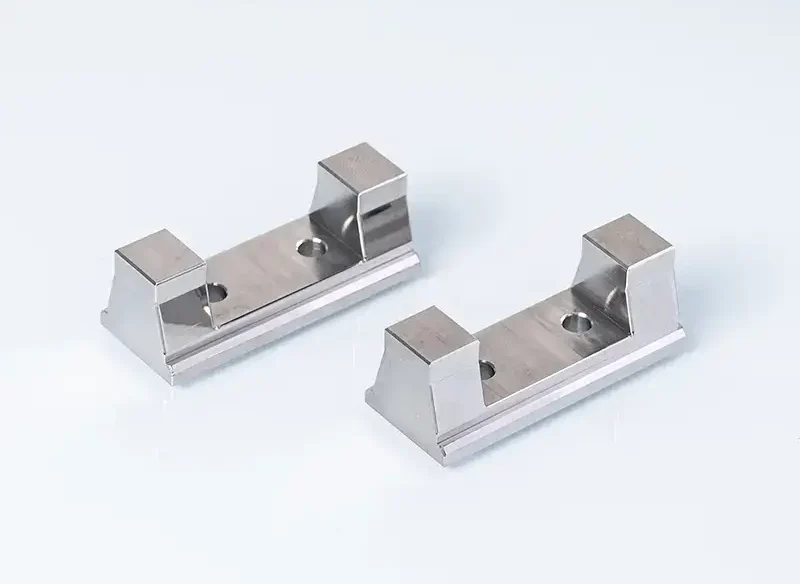Benefits of CNC Machining and 3D Printing
Product development relies on rapid prototyping—the ability to quickly create physical models to test, improve, and iterate designs. Two powerful tools are at our disposal: CNC machining and 3D printing. However, when it comes to choosing the right tool for your project, the answer isn’t always simple. This article explores the pros and cons of both technologies to help you make an informed decision.
1.Importance of Rapid Prototyping in Product Development
Rapid prototyping has changed the product development landscape, and is essential for both CNC machining and 3D printing. It allows you to transform abstract ideas into physical models, allowing you to better evaluate and identify potential issues related to fit, form, and function. This can help you collect feedback from real users to improve your designs, while speeding up the development process through rapid iterations, allowing you to release products faster.
2.Defining CNC Machining
CNC machining is a subtractive manufacturing process. A block of solid material (metal, plastic, etc.) is fed into the machine, and then a computer-controlled tool removes material to form the desired shape.
- Materials
A wide variety of materials, including aluminum, steel, brass, and plastic. - Advantages
High precision, excellent surface finish, and durable parts make them suitable for high-volume production. - Limitations
Can be time-consuming to set up, limited to creating designs that can be machined with traditional tools, and can create waste due to material removal.
3.Explore 3D Printing
3D printing, also known as additive manufacturing, builds objects layer by layer based on a digital 3D model. Material is deposited or solidified to form the desired shape.
- Types of Technology
FDM (fused deposition modeling), SLA (stereolithography), SLS (selective laser sintering), etc. - Materials
Plastics, metals, resins, and even food-grade materials are becoming available. - Advantages
Fast turnaround time, ability to create complex geometries, suitable for small batch production, easy customization. - Limitations
Parts may not be as strong or durable as CNC machined parts, surface finish may be rough due to the technology, and material selection is limited compared to CNC machining.CNC machining and 3D printing each have their advantages and limitations.
4.Choosing the right tool: CNC machining and 3D printing
Choosing CNC machining or 3D printing for rapid prototyping depends on your needs. Here are some breakdowns of CNC machining and 3D printing to help you make your choice:
1) CNC machining takes center stage
- Precision is critical
When your design requires exceptional precision and tight tolerances, CNC machining is top of the list. Its computer-controlled approach ensures parts are highly accurate, which is essential for components where exact dimensions are critical to functionality. - Get ready for production
If you plan to go into mass production, CNC machining will be a cost-effective option. While setup may take longer, unit costs drop significantly for high-volume production. - Material issues
Does your end product require a specific material that is difficult or impossible to 3D print? CNC machining offers a wider range of material options, including metals, various plastics, and even wood. This enables you to create prototypes that closely resemble your end product in terms of material properties. - Small tolerances, powerful functionality
When precise fit and smooth operation are critical to the functionality of your prototype, CNC machining meets your needs. Its ability to achieve small tolerances ensures that components work seamlessly together as intended.
2) 3D printing helps with rapid iterations
- Agility is key
Do you need to iterate quickly and try different design variations? 3D printing excels in this regard. Its fast turnaround time allows you to quickly create multiple prototypes, facilitating rapid design changes and improvements. - Conquer Complexity
Does your design have complex geometries or unique features that are challenging or costly to machine? 3D printing thrives on complexity. It can handle complex shapes and internal details with relative ease. - Low-volume prototyping
If you only need a small number of prototypes for testing and user feedback, 3D printing is often more cost-effective. The lower setup costs make it ideal for small-scale prototyping needs. - Material Exploration
Want to explore different materials in your design before making a final choice? 3D printing offers a growing selection of materials, allowing you to experiment and find the best fit for your application.
5.Conclusion
CNC machining and 3D printing are both valuable tools for rapid printing, and each has its own advantages and disadvantages. By understanding the factors discussed in this article, you can decide whether CNC machining and 3D printing are best for your specific project needs. Keep in mind that the ideal choice often depends on factors such as design complexity, material requirements, budget, and production volume.
